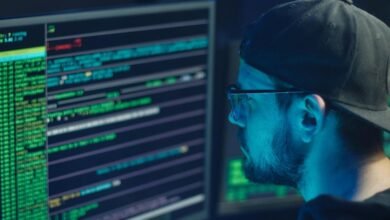Thejavasea.Me Leaks Aio-Tlp370: Thejavasea.Me Leaks Aio-Tlp370: Everything You Need to Know

The Aio-Tlp370 leak from thejavasea.me marks a pivotal moment in cybersecurity discussions. It highlights severe vulnerabilities stemming from inadequate encryption and outdated software. Users face heightened risks, including potential identity theft, while organizations confront reputational and regulatory repercussions. Understanding the origins and implications of this breach is crucial for developing effective preventive measures. The question remains: what steps can be taken to fortify defenses against such incidents in the future?
Overview of the Aio-Tlp370 Leak
While the specifics of the Aio-Tlp370 leak remain shrouded in complexity, it is evident that the incident has raised significant concerns within the cybersecurity community.
The breach highlights critical data exposure, revealing numerous security vulnerabilities that could potentially compromise sensitive information.
Analysts emphasize the urgent need for robust security measures to mitigate risks and protect the integrity of digital environments against future threats.
Origins and Causes of the Breach
Investigations into the origins and causes of the Aio-Tlp370 breach reveal a multifaceted landscape of vulnerabilities and lapses in security protocols.
The breach origins trace back to inadequate encryption measures, unpatched software, and insufficient employee training.
These security vulnerabilities collectively contributed to the exposure of sensitive data, highlighting critical areas for improvement in organizational cybersecurity frameworks to prevent future incidents.
Potential Implications for Users and Organizations
The Aio-Tlp370 breach presents significant implications for both users and organizations, primarily centered on data security and trust erosion.
User impact includes heightened vulnerability to identity theft and financial loss, necessitating robust security measures.
Organizations may face reputational damage and regulatory scrutiny, compelling them to reevaluate and strengthen their cybersecurity frameworks to restore user confidence and mitigate potential risks associated with such breaches.
Lessons Learned and Best Practices for Prevention
Addressing the repercussions of the Aio-Tlp370 breach reveals critical lessons and best practices for enhancing cybersecurity protocols.
Organizations must prioritize comprehensive risk assessments to identify vulnerabilities and implement robust security measures.
Continuous training for personnel, regular system audits, and incident response plans are essential for mitigating future breaches.
Adopting a proactive approach fosters resilience against evolving cyber threats, ensuring user data remains safeguarded.
Conclusion
The Aio-Tlp370 leak serves as a stark reminder that organizations must prioritize cybersecurity to avoid falling victim to preventable breaches. With inadequate encryption and unpatched software as key vulnerabilities, it is clear that a stitch in time saves nine. Users face heightened risks while organizations grapple with potential reputational damage. To fortify defenses, implementing robust security measures and fostering a culture of continuous training is imperative to mitigate future threats in an increasingly perilous digital landscape.




